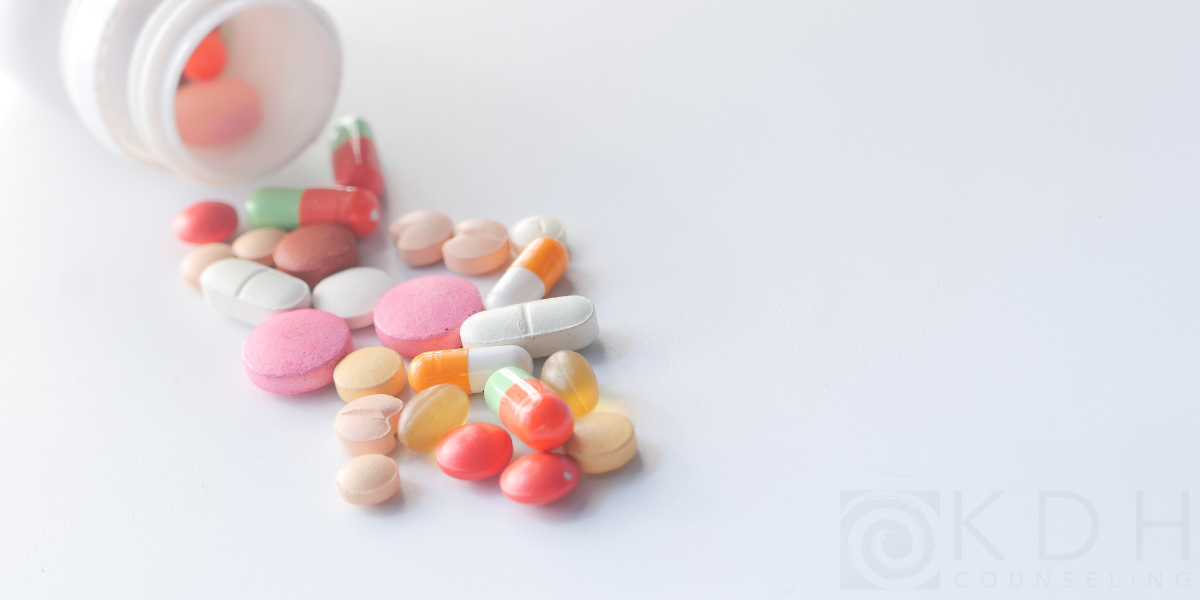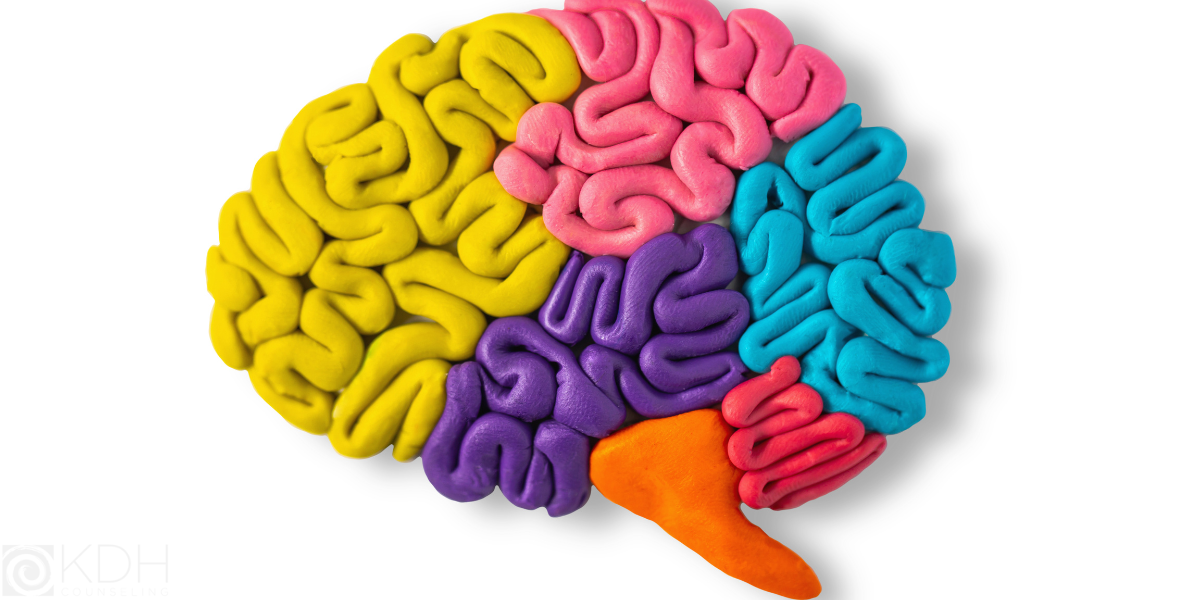ADHD 101
Ever felt like your mind is a whirlwind of thoughts, racing faster than you can keep up? Welcome to the world of ADHD. As someone who's navigated...
9 min read
 Monet David, MS, LPC
:
Jun 6, 2025 2:07:36 PM
Monet David, MS, LPC
:
Jun 6, 2025 2:07:36 PM

Attention-Deficit/Hyperactivity Disorder (ADHD) is a complex neurodevelopmental condition characterized by persistent patterns of inattention, hyperactivity, and impulsivity that interfere with functioning or development. For many individuals, medication plays a crucial role in managing these symptoms and improving quality of life. Understanding the various types of ADHD medication, their mechanisms of action, potential side effects, and effective management strategies is essential for making informed treatment decisions. As an ADHD-Certified Clinical Service Provider, I cannot prescribe medication, but I am equipped with information pertinent to medication management. I work with my clients to empower them with knowledge, facts and evidence based information so they can find the right medication.
When considering medication management for ADHD, stimulants are often considered the gold standard. Despite a growing negative reputation, sometimes fueled by uninformed discussions, stimulants have been prescribed to children and adolescents safely and effectively since the 1930s. The efficacy of stimulants in addressing ADHD symptoms is remarkably well-researched and documented, making them one of the most thoroughly studied medications on the market, especially concerning their use in children and adolescents. The most common stimulants prescribed fall into two main categories: Methylphenidate-based compounds (e.g., Ritalin, Methylin, Focalin, Metadate) and Amphetamine-based compounds (e.g., Adderall, Vyvanse).
Stimulants primarily work by optimizing the balance of certain neurotransmitters—chemical messengers that allow your brain and nervous system to function. The key neurotransmitters involved are dopamine and norepinephrine. In individuals with ADHD, there is often an imbalance or inefficiency in these neurotransmitter systems, particularly in areas of the brain responsible for executive functions.
By increasing the availability of these neurotransmitters, stimulants help to create a more regulated brain state. This enhanced regulation subsequently enables individuals to better engage in executive functioning tasks such as memory, impulse control, planning, organization, and sustained attention.
One of the significant benefits of taking stimulants is the immediate results they can provide. Within hours of the first dose, many clients experience a marked improvement in their functioning, noticing better focus, reduced impulsivity, and improved task completion. This rapid onset can be highly encouraging for individuals seeking relief from debilitating ADHD symptoms.
However, a notable drawback of stimulants is the necessity of taking the medication regularly and consistently. Due to their relatively short half-life (the time it takes for half of the drug to be eliminated from the body), their effects typically last for only a few hours. This means that for sustained symptom management throughout the day, multiple doses may be required, or extended-release formulations are often prescribed. The need for consistent adherence can be particularly challenging for individuals with ADHD, who often struggle with memory, organization, and task initiation. This is why it's incredibly important to solicit support from friends or family who can help keep individuals accountable and on track with their medication schedule. Strategies like setting alarms, using pill organizers, or creating daily routines around medication intake can be invaluable.
While stimulants are highly effective, they are not suitable for everyone. Sometimes, due to various medical reasons (e.g., pre-existing heart conditions, anxiety disorders exacerbated by stimulants, or a history of substance use disorder), or simply due to personal preference, people may choose to explore non-stimulant medication options.
is a prominent non-stimulant medication for ADHD. Interestingly, it was initially developed and branded as an antidepressant but was found to have significant efficacy in addressing ADHD symptoms. Strattera works as a Selective Norepinephrine Reuptake Inhibitor (SNRI). Unlike stimulants, which primarily affect dopamine and norepinephrine, Strattera's primary mechanism is to selectively increase the levels of norepinephrine in the brain by preventing its reuptake back into the nerve cells. This leads to a gradual increase in norepinephrine availability, which, over time, helps improve attention, reduce impulsivity, and manage hyperactivity.
A significant advantage of Strattera, particularly for individuals with ADHD who also struggle with substance use disorder, is that it cannot be abused like traditional stimulants. It does not produce the immediate "high" or euphoric effects that can be associated with stimulant misuse, making it a safer option for this population.
Unlike stimulants, non-stimulants like Strattera take time to build up in one's system, requiring more patience and fortitude when initiating medication. Whereas the effects of a stimulant can be felt within hours, non-stimulants typically require anywhere from 4 to 8 weeks of consistent daily use before the full therapeutic benefits can be observed. This delayed onset can be frustrating for some, but the sustained effects once the medication reaches therapeutic levels can be a significant benefit. Another advantage of non-stimulants is their longer duration of action; they remain in a person's system for approximately 24 hours, meaning they only need to be taken once daily, offering round-the-clock symptom control without the peaks and valleys associated with shorter-acting stimulants.
Beyond the primary stimulant and non-stimulant categories, other medications are sometimes prescribed off-label or in combination with other treatments to address ADHD symptoms or co-occurring conditions.
It's important to acknowledge that, like all medications, ADHD treatments can come with a range of potential side effects. While many individuals tolerate these medications well, and side effects are often manageable, being aware of them is crucial for informed decision-making and proactive management.
Common side effects from ADHD medication can include:
As with all medications, individuals must carefully weigh the potential benefits against the risks associated with treatment. When discussing medication management with clients, it's crucial for healthcare providers to be transparent in describing both the benefits and potential risks. It's often emphasized that medication and therapy in combination typically provide the best outcomes for ADHD management, as therapy can address behavioral strategies, coping skills, and emotional regulation that medication alone cannot.
During discussions about medication, it's helpful to explore any reservations the client may have about taking medicine, their personal history of medication use (what worked, what didn't), and how they can effectively communicate with their medication provider to ensure they're making an informed health decision. Once the medication has been prescribed, ongoing check-ins are essential to determine its efficacy and to engage in problem-solving around any negative side effects. The first piece of advice is always to make sure the client is communicating consistently with their medication prescriber. The prescriber ultimately has the most knowledge around the medication and can intervene when necessary to increase or decrease dosing, or to try a different class of drug entirely. The relationship between the client, the therapist, and the prescriber needs to be truly collaborative in nature to support the client fully and holistically.
The potential side effects listed above can understandably feel overwhelming and not worth the effort. However, it's important to me to reassure clients that many side effects can be navigated through behavioral adjustments or medication modifications. For example, if a client is experiencing "rebound" in the afternoon once the medication is out of their system, they might try changing the time of their dosing, or their prescriber might consider adjusting the type of medication (e.g., switching to an extended-release formulation) or even pursuing a slightly higher dose to cover the entire duration of their day. If clients express a lack of confidence in their ability to follow through with medicating consistently, problem-solving creative ways to remove that barrier becomes paramount. For some clients, it's as simple as placing the medication bottle near their car keys or toothbrush in the morning as a visual reminder. For others, it's about purchasing a pill case that provides reminders or tracks whether they have taken their medication for the day (technology has been a tremendous help with executive functioning challenges, offering apps and smart pill dispensers).
One of the best parts of accessing therapeutic services when addressing issues around ADHD is the possibility of adaptation and skill-building. Many clients don't realize how they have naturally adapted to deal with their symptomology in the face of a truly ableist world that often expects a level of functioning not necessarily accessible to all people. My job as a therapist is to "level up" those existing skills and teach new ones in session so that clients are not so burdened by societal expectations, regardless of medication status. This includes strategies for organization, time management, emotional regulation, and communication.
Determining the appropriate dosage of ADHD medication for a patient is a careful and individualized process, often described as a "low and slow" approach. The Food and Drug Administration (FDA) provides a set of recommendations for stimulant dosing, which are typically very cautious, especially to reduce the possibility of misuse or abuse. However, it's important to emphasize that when taken exactly as prescribed, the likelihood of abuse with ADHD medications is significantly diminished.
The "low and slow" method is often employed by prescribers, meaning they start with the lowest possible therapeutic dose to determine its efficacy within the client's system. This approach allows the healthcare provider to:
It is a collaborative effort between the patient, their family (if applicable), and the healthcare provider to carefully observe changes, report concerns, and make informed decisions about dosage adjustments. This personalized approach ensures that individuals with ADHD receive the most effective and well-tolerated medication regimen to support their overall well-being and functional capacity.

Ever felt like your mind is a whirlwind of thoughts, racing faster than you can keep up? Welcome to the world of ADHD. As someone who's navigated...

One of the first questions I ask a new client...what is your opinion about medication, and what are your past experiences with medication? Often,...

When I am in my office, I am guided by what I needed when I was younger. I needed a therapist that was empathic, funny, nonjudgmental and above all...